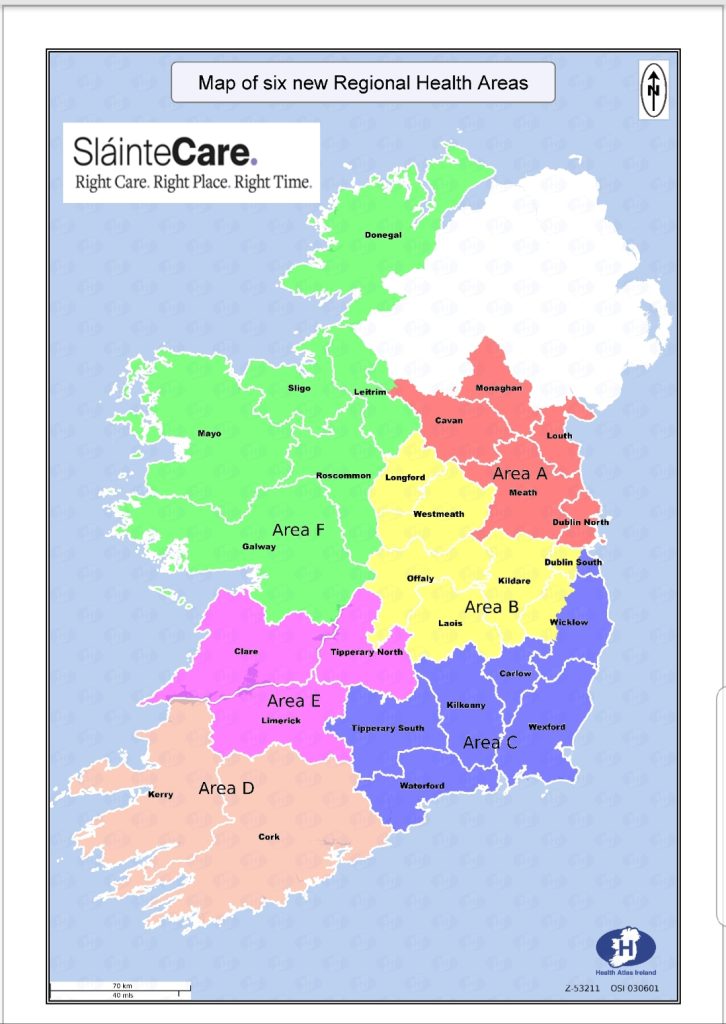
There has been much said and written about the proposed restructuring of the Health Services and the formation of Regional Health Areas. A quick stock check of what we know is in order, writes HMI President, Tony Canavan
What we know!
The original proposal to develop Regional Health Areas was announced in May 2017 as a key part of the strategic plan for our health services, Sláintecare. Detail of the geographical composition of these areas came two years later in 2019, with the announcement that the six RHAs will cover the following areas:
- Area A: North Dublin, Meath, Louth, Cavan, and Monaghan;
- Area B: Longford, Westmeath, Offaly, Laois, Kildare, and parts of Dublin and Wicklow;
- Area C: Tipperary South, Waterford, Kilkenny, Carlow, Wexford, Wicklow, part of South Dublin;
- Area D: Kerry and Cork;
- Area E: Limerick, Tipperary and Clare;
- Area F: Donegal, Sligo, Leitrim, Roscommon, Mayo, and Galway.

The departure of some senior personnel from the Sláintecare Office prompted questions regarding the overall commitment to the roll out of the plan and in particular the commitment to the Regional Health Authorities. In December 2021, the Minister underlined his commitment to the reform agenda, with the announcement of a special advisory group on RHAs, chaired by Medical Council CEO, Leo Kearns. This group was established to provide guidance and support as the Department of Health and HSE planned for the transition towards RHAs.
The HSE has committed to the development and roll out of RHAs with preparatory work progressing this year and roll out commencing in 2023.
Announcements over recent weeks by Government and the HSE have added new impetus to the development. In its Service Plan, published earlier this year and building on its corporate plan, the HSE has committed to the development and roll out of RHAs with preparatory work progressing this year and roll out commencing in 2023.
On April 5 this year, the Department of Health published a press release on the RHAs which clarified some of the key issues relating to governance and outlined the intention to eventually step down the current service delivery structures, Hospital Groups and Community Healthcare Organisations. The Department also published the Business Case for the RHAs which provided further clarity on how the proposed new structures were going to be established. This document, which is well worth a read, (https://www.gov.ie/en/publication/4eda4-slaintecare-regional-health-areas-rhas/#government-commitment-to-the-implementation-of-regional-health-areas) outlines the three options considered. The favoured option is called the ‘HSE-Local model’ of regionalisation. This option was considered the most feasible and least disruptive, but still had the potential to deliver the required reform of health service structures. It means that the RHAs will not be fully autonomous with their own boards. They will operate under the HSE. However, it also means that they can be established relatively quickly.
The Unknowns
While the picture is much clearer now, there are many questions still to be worked out. For example, Regional Health Areas (RHAs) will help to align community and hospital services. They will enable population-based resource allocation and will strengthen local governance. This will ultimately lead to better and more sustainable patient care. It is less clear how the patient pathways already established and being established (most are still work in progress) between hospitals and within hospital groups, will be supported. These pathways are critical to the sustainability of our health services and critical to the quality of care that is provided. How will national or super regional hospital and other services be supported under the new model? In short, how will we ensure that the baby doesn’t disappear with the bath water in the pursuit of integration between hospital services and community services.
The Prize
As always, the best strategy from a health manager perspective, is to keep an eye on the prize. We all know that doing nothing condemns patients to increasingly frustrating and dangerous delays in our EDs and extending waiting lists. Instinctively, we know that truly integrated care serves patients well. The role of health Managers in providing workable solutions to the unanswered questions over the coming months is critical to its success. https://www.gov.ie/en/press-release/8b863-government-approves-regional-health-areas-proposal-for-the-geographic-alignment-and-integration-of-care-across-ireland/

